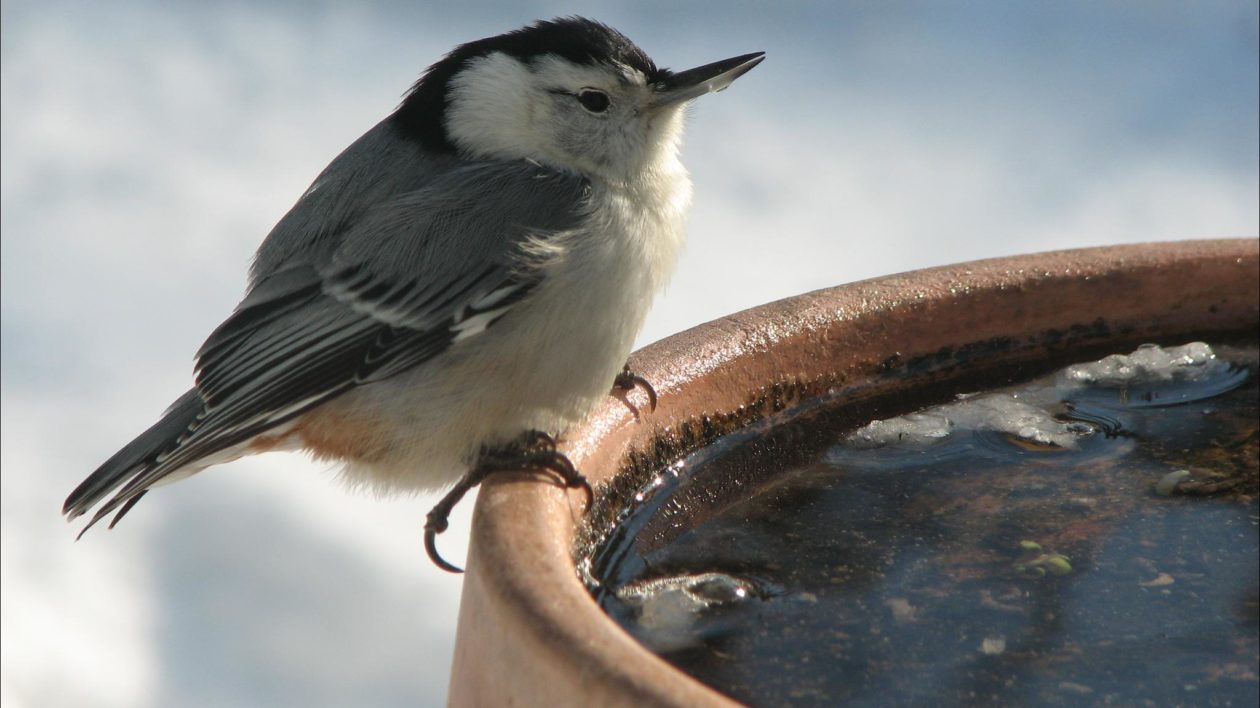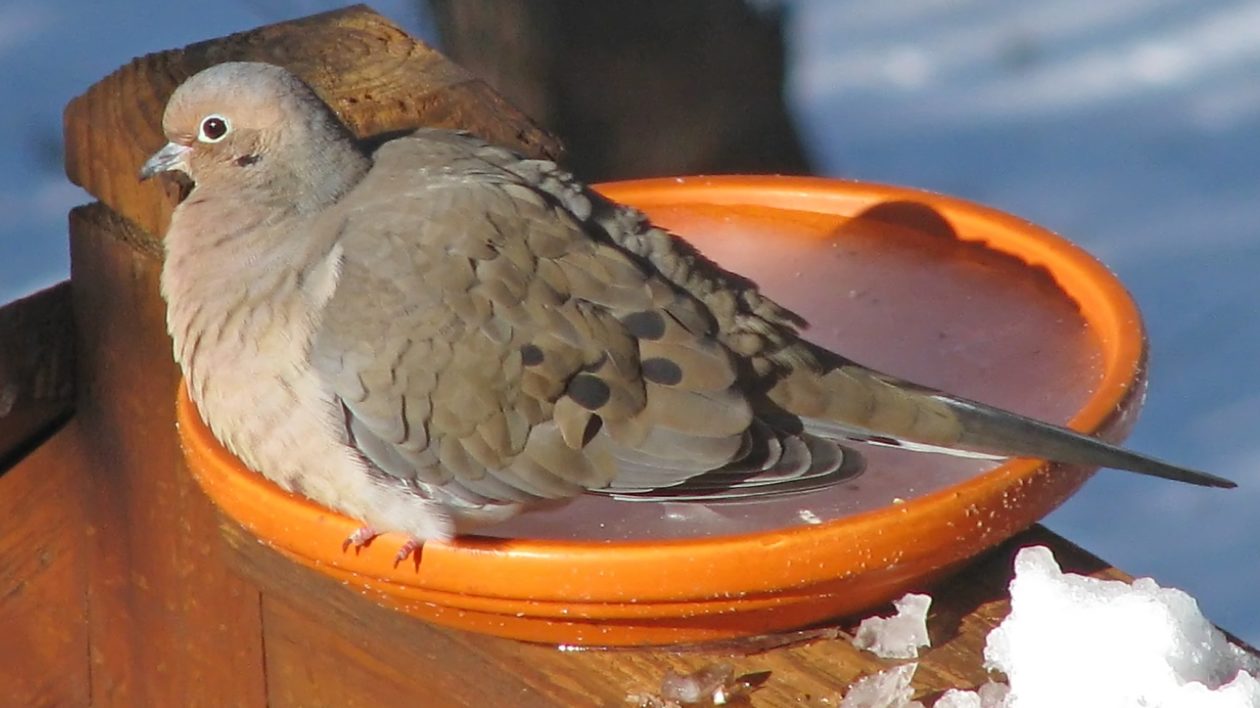How do birds get water when its freezing outside? My birdbath is a miniature ice skating rink. I just dont see how the birds survive. â Minnie P., Minox ND
A Dangerous Winter Bath
According to an article by Pennington, bathing for birds in the winter can be dangerous. Puddles will tend to melt only when the temperature is high enough, and water on feathers won’t freeze before the birds have a chance to shake it off.
Having water like this available for birds to bathe in is something that many bird advocates may decide to buy heated birdbaths. However, heated birdbaths should be used a certain way. Birds’ feathers may become frozen when they take a heated bath in a birdbath on a chilly day.
In fact, there are documented records of starlings dropping from the sky seconds after taking off from heated birdbaths, and wet mourning dove tails freezing to branches as the water from a bath freezes. There was even an instance reported in Star Tribune where an avid bird watcher, Tami Vogel, reported recovering six cardinals in her yard “unable to fly because their feathers had frozen and they literally could not extend their wings.”
The important thing is to be able to adjust your heated birdbath so that birds can safely drink rather than bathe.

The magic of water
There is no liquid water at sub-zero temperatures or in deep snow. Birds must obtain their water needs from food, such as insects’ bodies or wild fruits. Or else from eating ice and snow. Unless they find a heated birdbath.
Maintaining open water is an opportunity for bird lovers. The water is only meant to be kept liquid, not heated. Even though the water’s edges might freeze in extremely cold weather, as long as part of the surface is still liquid, birds will flock there like crazy.
Hereâs why liquid water is so important to birds.
Safe Ways We Can Provide Water
Thankfully, there are alternative secure methods by which we can give birds water. One method is to put out an unbreakable shallow bowl of water and then bring it back in once the ice forms. Birds will find your bowl more quickly if you leave it out every day at the same time.
Returning to the heated birdbaths, we can use them to let birds drink from them instead of bathing in them if we use them properly.
If you decide to use a heated birdbath, recommendations include obtaining a nonmetallic grille or finding another effective method of very slightly covering the bath.
Tips from the National Wildlife Federation even suggest that you can place some dark stones (this helps to absorb heat) at the bottom and some sticks on top to encourage perching. The goal is to allow birds enough room to insert their bills for drinking without being able to submerge themselves into the water.
Furthermore, think about installing an immersion-style water heater if you are currently using a heater in your birdbath to prevent the water from freezing.
Lastly, refrain from putting substances in the water that function as antifreeze, like glycerin. This mixture can cause birds’ blood sugar levels to rise and even mat their feathers, which reduces their insulation value.

FAQ
What do birds drink when everything is frozen?
Should I put warm water out for birds in winter?
How do birds survive in cold water?